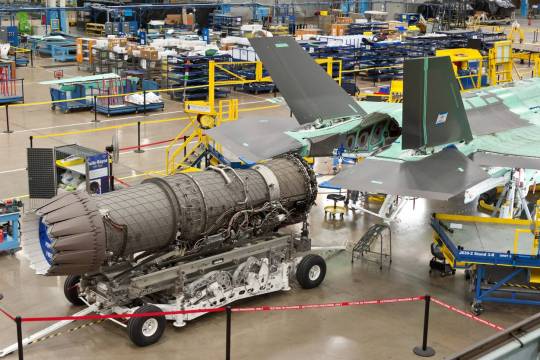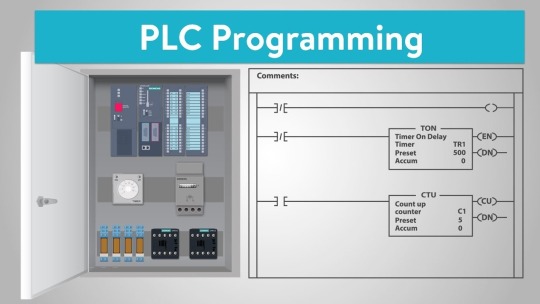#manufacturing execution system courses
Explore tagged Tumblr posts
Text
SAP S4 Training
Empower your professional journey with SAP S4 Training. Dive into a transformative learning experience, blending theory and practical application. Acquire proficiency in SAP's revolutionary ERP suite, positioning yourself as a sought-after expert in the ever-evolving realm of enterprise solutions.
Read More at: www.skillbee.co.in/certificatation-course-on-sap-s4-hana
1 note
·
View note
Text
MES System
Explore our comprehensive MES system, designed to streamline manufacturing processes and enhance production efficiency. Our MES courses cover key aspects of this essential Manufacturing Execution System, providing in-depth knowledge and practical skills for a competitive edge in your industry. Enroll today to master MES.
Get more details at: www.companysconnects.com/manufaturing-execution-system-mes
#pharmacovigilance courses#drug regulatory affairs certification#CSV Certification#Manufacturing Execution System
0 notes
Text
something i don't think about enough is the fact that, in vaults 31, 32, and 33, they need to have children. there's no choice. in order for the vault's population to survive, and to fulfill the mission of reclamation day, they need to reproduce.
of course, we also know that there's another element at play here: the actual mission of vaults 31, 32, and 33.
(below the cut, i discuss. the above with a bit more detail. spoilers in case u haven't watched the whole season i guess? also, i mention my sona/OC elodie, since she's my fun autistic way of understanding how these vaults affect the people within them.)
the three vaults aren't just to preserve humanity, they're also to preserve vault-tec, and create a line of super-managers from their own executive assistants. they took a bunch of people they deemed to have good genes, systemically unthawing and introducing them to the two breeding pools. i wouldn't be surprised if they unthawed people based on some algorithm that decided 'this person's genes would be the best to introduce into this gene pool'.
they probably also have some sort of genetic match system, especially for the triennial trade. who would be the best, from the applicants, to breed with the applicants from the other vault? it's likely rigged from the start. they know who's going over. the marriages are all, in a way, arranged, in order to preserve the experimental design.
there's a hypothesis, and they have to test it. there is no hypothesis if people breed willy-nilly.
now, from a dweller's perspective, all they know is that they're creating the next generation that will take over the surface. as a woman, that's their WHOLE PURPOSE. a woman's purpose in the vault is to have kids. their maternal care is probably incredibly good to protect this important throughline. if you don't have kids, then, you're seen as a poor contributor to the success of the vault.
i think there's a real horror here, though. it didn't seem as extreme as the other vaults' experiments, at first. but the more i thought about this, and the more i thought about how women didn't really get much choice in who they got with, the more horrific it felt.
then i also got to thinking, if they have all these cryofrozen people, why not unfreeze more of them to prevent the whole inbreeding thing. because it's deliberate, to control who reproduces with who. or that's my theory. they could easily prevent this whole genetic bottlenecking by introducing more members, more people with different genetics. but they don't.
to be randomly assigned a man, then to need to have kids with them, it's not a very reassuring thought. to have the genetically perfect man assigned too, it was just weird. alarm bells! what if he's terrible! what if our personalities aren't compatible!
to end it off, an interpretation of this through the eyes of a dweller. i've always wanted kids. and i think, inherently, that my oc, elodie, would also want kids. but then, upon finding out the truth behind the vault, how would she react? i know that i would wonder if that's even something i really wanted. and she, too, would wonder. was she just conditioned by people who were frozen 200+ years ago to want to have kids? would she ever choose that, if actually given the choice?
there's also the element of. if i had other people, would i actually choose to like the person i do? or is it also conditioned? with a lack of choices, there's only so many people you could fall for. could that love be real, and genuine? or is it manufactured by our circumstances.
so yeah. i didn't really think about how horrific the three vaults were, until i remembered "oh i'm afab. oh i would be horrified if i had to question if this was something i was conditioned to want or if its something i actually want. oh god i can't even have the person i love either."
it's an unsettling, but thought-provoking, experiment.
#outlet yaps#fallout tv#fallout#fallout on prime#fallout oc#what are the implications for normelodie?#will they survive this?#yes. because i think love isn't something you can force.#love isn't something you can will away either.#this is what happens when you don't teach ethics to scientists#they shove a bunch of humans underground and re-create eugenics
45 notes
·
View notes
Text
Well, it’s good we’re suddenly paying attention to postal logistics. Retailers, traders, and consumers are trying to figure out what U.S. President Donald Trump’s suspension—and then reimposition—of the postal service’s de minimis rule means. The end of customs-free imports for Chinese goods worth less than $800 was perhaps inevitable, and drugs and artificially cheap clothes should definitely have a harder time entering the United States. So far, though, the executive order has mostly led to chaos that has forced Trump to suspend the measure.
Allow me to nag: Knowing some Latin is exceedingly useful. Those who have had the privilege of learning this versatile language will know that de minimis means “about the smallest [things].” For the past nine years, the United States has been rather generous in its definition of the smallest things. The de minimis rule for goods coming into the country per post has been $800 since 2016, which means that only goods worth more than $800 are subject to customs fees. That can buy quite a lot, especially online.
China has been the big winner of this loophole, especially budget fashion manufacturers like Shein and Temu, which don’t have stores in the United States but ship almost everything directly to their U.S. consumers. (Shein has a warehouse in Indiana, from which it ships some items and also handles returns, and Temu announced last year that it was going to launch U.S. warehouses.)
For $800, one also gets quite a bit of fentanyl. The synthetic opioid that has killed hundreds of thousands of Americans, including nearly 75,000 in 2023, mostly arrives in small parcels from Mexico and China. Six years ago, Beijing imposed heavy restrictions on fentanyl, but crafty entrepreneurs instead began exporting the lethal drug’s essential components. Today, China is the world’s leading exporter of such precursor chemicals, according to an October 2024 report.
That makes the de minimis parcels arriving in the United States every day a mixed bag, and they’re growing at a dizzying rate. By last October, U.S. Customs and Border Protection (CPB) was processing some 4 million de minimis shipments per day, up from 2.8 million per day in 2023. “Bad actors are exploiting this explosion in volume to traffic counterfeits, dangerous narcotics, and other illicit goods including precursor chemicals and materials such as pill presses and die molds used to manufacture fentanyl and other synthetic drugs that are killing Americans,” CBP noted.
It’s these drug packages that Trump tried to reduce with a Feb. 1 executive order ending the $800 de minimis rule for goods made in China. “I, DONALD J. TRUMP, President of the United States of America, find that the sustained influx of synthetic opioids has profound consequences on our Nation, including by killing approximately two hundred Americans per day, putting a severe strain on our healthcare system, ravaging our communities, and destroying our families,” he explained in the executive order.
De minimis shipments are a mixed bag—and an enormous one at that. Under a normal government, any change to de minimis rules would need to be carefully planned with CBP, the U.S. Postal Service (USPS), FedEx, DHL, and other logistics companies. That didn’t happen. And now that the executive order has been signed, it has to be implemented, since lex dilationes abhorret—the law abhors delay.
As a result, the executive order has caused logistical turmoil. To begin with, there are the parcels that were midair when Trump signed the order. Then there are the ones that had just arrived but had not been processed yet by CBP. Remember, over 100,000 de minimis packages arrive in the United States every hour. Not all of them are from China, of course, but that just means that CBP has to go through all the parcels that have recently arrived and separate out the ones from China.
And then, CBP could, of course, destroy the fentanyl packages, but the legal shipments have to be stored somewhere and then returned to their senders, since it’s the sender—not the recipient—that pays customs duties.
Oh, and did I mention the packages in China awaiting shipment to the United States? Since customers are unlikely to want to pay more to absorb the customs costs, and Shein, Temu, and others would be likely to retroactively add to their bills, the parcels had to return to the sellers and refunds had to be initiated.
Facing this mess, shipping giants threw up their hands. USPS and other freight companies suddenly had to deal with tons of packages with unclear destinations—and even less clarity about who would pay. USPS announced it was going to stop handling parcels from China altogether. Then, on Feb. 7, the White House announced the executive order would be delayed to give federal agencies more time to prepare. That suspension was, in fact, inevitable.
It makes sense to close the loophole. The $800 de minimis was a globalization-era luxury. Those who thought it up seem not to have countenanced the possibility of it being used for drug shipments, or that Chinese fast-fashion retailers would systematically use it to undercut competitors that ship and sell their goods the traditional way, via bulk country-to-country shipments and sales to consumers from warehouses or shops within the United States. When it’s closed, that’s going to mean a substantial blow to firms like Temu and Shein, which may not win favor with some of Trump’s allies who have their own stakes in those firms.
This hastily composed executive order has mostly brought chaos upon the United States, and now there’s the embarrassment of having to delay its implementation. That seems to be a consistent pattern with the new administration’s shotgun approach to governance. Trump, let me introduce you to a motto coined by Emperor Augustus: festina lente—make haste slowly.
20 notes
·
View notes
Text


LEICA AND THE JEWS
The Leica is the pioneer 35mm camera. It is a German product - precise, minimalist, and utterly efficient.
Behind its worldwide acceptance as a creative tool was a family-owned, socially oriented firm that, during the Nazi era, acted with uncommon grace, generosity and modesty. E. Leitz Inc., designer and manufacturer of Germany's most famous photographic product, saved its Jews.
And Ernst Leitz II, the steely-eyed Protestant patriarch who headed the closely held firm as the Holocaust loomed across Europe , acted in such a way as to earn the title, "the photography industry's Schindler."
As soon as Adolf Hitler was named chancellor of Germany in 1933, Ernst Leitz II began receiving frantic calls from Jewish associates, asking for his help in getting them and their families out of the country. As Christians, Leitz and his family were immune to Nazi Germany's Nuremberg laws, which restricted the movement of Jews and limited their professional activities.
To help his Jewish workers and colleagues, Leitz quietly established what has become known among historians of the Holocaust as "the Leica Freedom Train," a covert means of allowing Jews to leave Germany in the guise of Leitz employees being assigned overseas.
Employees, retailers, family members, even friends of family members were "assigned" to Leitz sales offices in France, Britain, Hong Kong and the United States, Leitz's activities intensified after the Kristallnacht of November 1938, during which synagogues and Jewish shops were burned across Germany.
Before long, German "employees" were disembarking from the ocean liner Bremen at a New York pier and making their way to the Manhattan office of Leitz Inc., where executives quickly found them jobs in the photographic industry.
Each new arrival had around his or her neck the symbol of freedom - a new Leica camera.
The refugees were paid a stipend until they could find work. Out of this migration came designers, repair technicians, salespeople, marketers and writers for the photographic press.
Keeping the story quiet The "Leica Freedom Train" was at its height in 1938 and early 1939, delivering groups of refugees to New York every few weeks. Then, with the invasion of Poland on Sept. 1, 1939, Germany closed its borders.
By that time, hundreds of endangered Jews had escaped to America, thanks to the Leitzes' efforts. How did Ernst Leitz II and his staff get away with it?
Leitz, Inc. was an internationally recognized brand that reflected
credit on the newly resurgent Reich. The company produced cameras, range-finders and other optical systems for the German military. Also, the Nazi government desperately needed hard currency from abroad, and Leitz's single biggest market for optical goods was the United States.
Even so, members of the Leitz family and firm suffered for their good works. A top executive, Alfred Turk, was jailed for working to help Jews and freed only after the payment of a large bribe.
Leitz's daughter, Elsie Kuhn-Leitz, was imprisoned by the Gestapo after she was caught at the border, helping Jewish women cross into Switzerland . She eventually was freed but endured rough treatment in the course of questioning. She also fell under suspicion when she attempted to improve the living conditions of 700 to 800 Ukrainian slave laborers, all of them women, who had been assigned to work in the plant during the 1940s.
(After the war, Kuhn-Leitz received numerous honors for her humanitarian efforts, among them the Officier d'honneur des Palms Academic from France in 1965 and the Aristide Briand Medal from the European Academy in the 1970s.)
Why has no one told this story until now? According to the late Norman Lipton, a freelance writer and editor, the Leitz family wanted no publicity for its heroic efforts. Only after the last member of the Leitz family was dead did the "Leica Freedom Train" finally come to light.
It is now the subject of a book, "The Greatest Invention of the Leitz Family: The Leica Freedom Train," by Frank Dabba Smith, a California-born Rabbi currently living in England.
Thank you for reading the above, and if you feel inclined as I did to pass it along to others, please do so. It only takes a few minutes.
Memories of the righteous should live on.
Rabbi Yisroel Bernath
50 notes
·
View notes
Text
The morality of the vote:
Ive had enough of people telling me I care more about my own perfectionist sense of morality than using my vote to reduce harm as if that's an argument. As if that's not exactly what I'm going for.
Look, I watched Vaush cover the election, this is the guy who said it's a moral good to vote blue no matter who. Did you see how many people in his chat were going full doomer, considering suicide? Over the fact that Kamala lost when at best it was going to be 4 years of Trump but with abortions?
Yes, I do care more about my sense of morals than the infinitesimally small chance that my vote may lead to harm reduction, but the fact of the matter is, even if I knew for a fact that my vote would be the tiebreaker that solved the whole election. Even in that scenario, I still do not believe my vote would reduce harm and be a force of good in the world.
Its a simple fact that if your vote would ever change things, you wouldn't be allowed to do it. If the reality for you is that it's easy as just registering to vote and showing up on election day, no further thought? Then you can do that but I hope you don't believe your vote will make a difference.
Democracy functions at its most stable when elections are predictable, the final form of democracy is when approval rates couldn't be lower and re-election rates couldn't be higher.
So the vote is as useless as it could be, but why do I have a problem with it on moral levels?
Im not a utilitarian, my morals are not flexible based on consequence. I believe consequence based morality would be brilliant if you could perfectly predict the outcome of your actions when you're making them, however I doubt the predictive abilities of basically every human being. As such I believe in a more Kantian system of ethics where minimum standards of justice are applied. Murder is wrong not because of the consequences it brings but because each human being has an intrinsic worth and when you commit murder you disregard that intrinsic worth as a means to your own end. If you could lay out the perfect argument as to why killing someone would be a benefit for literally every other human being, it would still be immoral because a murder is a wrong in and of itself.
So let's talk about why voting might not be the most moral of actions:
Lets assume that voting does anything. I don't believe it does, but I'll entertain the hypothetical that it does.
Lets first assume I vote out of self interest, without regard for others. Well, then I'm disregarding the intrinsic value of others and the harm that may be caused by my vote to manufacture a preferred outcome for myself. I don't believe actions motivated by self interest need any further explanation as to why they're a moral wrong.
Now, let's assume I don't go with self interest and simply "Vote blue no matter who." That's a lack of rational consideration, simply following an axiom without thinking about it, even if you're technically doing a moral good, can never be a moral action. Not considering the wider implications for society wholly, ignoring things like the fact that no matter who I vote for the nation is on a long slow march toward fascism and neither party is doing anything to course correct is a moral wrong. Even if I do follow through with this, viewing it as the lesser of two evils, the problem with that is the lesser of two evils is still fucking evil.
Third, let's consider the universalism of the vote. For an action to be a moral good it needs to be universally applied to all moral actors. This is why I dislike the idea of the lesser of two evils. Being slightly less bad doesn't suddenly manufacture a good outcome. So if I were to call my vote a moral good, I would have to ignore and/or be okay with the fact that no law will be made that prevents Amazon's work conditions, no attempt will be made to pull out of Gaza (not falling for that one again, at least) and police will continue to be allowed to execute civilians with no due process and get away with it. I cannot bring myself to cast a vote without believing it will bring universal good instead of a religious adherence to this status quo. And if you would vote for a party that will continue to maintain this status quo, then don't call yourself antifascist. You're fascist-neutral if not an enthusiastic fascist.
Participation in the vote is consenting to the outcome of that vote. This is the one thing Utilitarians and I agree on, even if they don't think they do. (Hey, if you believe in consequence based morals, it should make sense that your bad consequences are a moral outcome.) And my moral beliefs do not allow me to participate and consent to a system that routinely violates human agency and dignity, endorse actions that cannot be universalized as morally positive, and be complicit in immoral outcomes.
So don't come to me with "you care about your own personal beliefs more than I do" bullshit. Yes, that's the point. Hey, maybe you should try having strong moral beliefs before you try to argue with mine.
And know what? I'd love to be wrong. I'd love it if there were a candidate I could cast my vote for, free of all moral doubt. Voting my conscience is not a freedom I am granted because my conscience has a habit of noticing shit like the fact that nothing will be different except a few minor things that don't actually change shit in the long run.
7 notes
·
View notes
Text
The Communist Manifesto - Part 2
[ ◁ First | ◃Prev | Table of Contents | Next ▹ ]
The feudal system of industry, in which industrial production was monopolised by closed guilds, now no longer sufficed for the growing wants of the new markets. The manufacturing system took its place. The guild-masters were pushed on one side by the manufacturing middle class; division of labour between the different corporate guilds vanished in the face of division of labour in each single workshop.
Meantime the markets kept ever growing, the demand ever rising. Even manufacturer no longer sufficed. Thereupon, steam and machinery revolutionised industrial production. The place of manufacture was taken by the giant, Modern Industry; the place of the industrial middle class by industrial millionaires, the leaders of the whole industrial armies, the modern bourgeois.
Modern industry has established the world market, for which the discovery of America paved the way. This market has given an immense development to commerce, to navigation, to communication by land. This development has, in its turn, reacted on the extension of industry; and in proportion as industry, commerce, navigation, railways extended, in the same proportion the bourgeoisie developed, increased its capital, and pushed into the background every class handed down from the Middle Ages.
We see, therefore, how the modern bourgeoisie is itself the product of a long course of development, of a series of revolutions in the modes of production and of exchange.
Each step in the development of the bourgeoisie was accompanied by a corresponding political advance of that class. An oppressed class under the sway of the feudal nobility, an armed and self-governing association in the medieval commune*: here independent urban republic (as in Italy and Germany); there taxable “third estate” of the monarchy (as in France); afterwards, in the period of manufacturing proper, serving either the semi-feudal or the absolute monarchy as a counterpoise against the nobility, and, in fact, cornerstone of the great monarchies in general, the bourgeoisie has at last, since the establishment of Modern Industry and of the world market, conquered for itself, in the modern representative State, exclusive political sway. The executive of the modern state is but a committee for managing the common affairs of the whole bourgeoisie.
* This was the name given their urban communities by the townsmen of Italy and France, after they had purchased or conquered their initial rights of self-government from their feudal lords. [Engels, 1890 German edition] “Commune” was the name taken in France by the nascent towns even before they had conquered from their feudal lords and masters local self-government and political rights as the “Third Estate.” Generally speaking, for the economical development of the bourgeoisie, England is here taken as the typical country, for its political development, France. [Engels, 1888 English Edition]
The bourgeoisie, historically, has played a most revolutionary part.
The bourgeoisie, wherever it has got the upper hand, has put an end to all feudal, patriarchal, idyllic relations. It has pitilessly torn asunder the motley feudal ties that bound man to his “natural superiors”, and has left remaining no other nexus between man and man than naked self-interest, than callous “cash payment”. It has drowned the most heavenly ecstasies of religious fervour, of chivalrous enthusiasm, of philistine sentimentalism, in the icy water of egotistical calculation. It has resolved personal worth into exchange value, and in place of the numberless indefeasible chartered freedoms, has set up that single, unconscionable freedom – Free Trade. In one word, for exploitation, veiled by religious and political illusions, it has substituted naked, shameless, direct, brutal exploitation.
The bourgeoisie has stripped of its halo every occupation hitherto honoured and looked up to with reverent awe. It has converted the physician, the lawyer, the priest, the poet, the man of science, into its paid wage labourers.
The bourgeoisie has torn away from the family its sentimental veil, and has reduced the family relation to a mere money relation.
[ ◁ First | ◃Prev | Table of Contents | Next ▹ ]
24 notes
·
View notes
Text
Star Wars Technical Worldbuilding Notes 4
The Malevolence's ion web thing is a mystery in terms of what it was actually supposed to do. That ship didn't accomplish anything any other warship its size couldn't. If anything, it's a waste of energy because of how much of the web just travels past a target that's hit.
All I've really been able to come up with for how that weapon might be uniquely useful is against planetary shields. It'd have to be attached to a much bigger ship, but theoretically if you put enough power into that, you could take down the shielding across an entire hemisphere in a single shot. Still a very energy-intensive novelty weapon at best - the standard doctrine of a concentrated barrage to form a local breach and landing ground forces through the breach exists for a reason - but I can see it coming in handy against a layout of ground defenses that planned on an attacking fleet being able to breach the shield at only a few specific points.
Headcanonically, conventionally armed Subjugator-class variants did end up as the main CIS line cruiser for the rest of that war, because it's also just a better design for a warship. I admittedly have yet to do proper volume calcs for either of them, but no matter how many reactors and cannons and military-grade power conduits you can fit in a Lucrehulk, the firing arcs are still abysmal in comparison.
Fortifications on planets can inherently be much higher-powered than ships, because there's much more space for reactors and neutrino radiator banks and shield generators. The limit on the fuel capacity of ships is the mass of hypermatter, which is also of no concern to a planet.
Ecumenopolis worlds would be the hardest to take, and would probably require specialized tactics, because the amount of territory you have to cover is a matter of volume and not just surface area.
Shields should be present on all planets with access to galactic standard technology. Not necessarily shields that can stand up to a turbolaser bombardment, but they need to at least stop asteroids.
The relative prominence of Mon Calamari compared to Kuat in New Republic and then Galactic Alliance warship construction is something I wonder about sometimes.
Kuat, of course, has their giant fucking system ring and stuff, and is historically the dominant starship manufacturer. But I wonder if the political prominence of Mon Calamari due to their contributions from the Rebellion onward might lead to them getting more new contracts.
Come to think of it, I like the thought of whatever corporate entity probably handles the Mon Cal yards having subsidiary facilities specifically on other ocean planets.
Or maybe the Mon Cal yards are just completely nationalized. I can kinda see the Galactic Alliance, at least, wanting at least one major shipyard to be under their direct control, to limit potential interference from corrupt corporate executives. I don't think I've ever heard anything explicitly contradicting that.
Anything you might hear about pre-Endor Mon Cal designs, which are converted civilian stuff, being superior to their purpose-built Imperial warship counterparts is pure bullshit, for, I'd think, obvious reasons.
Realistically, I do think the New Republic would have started to show original purpose-built warship designs earlier than we see, and as I've talked about before, that's the niche that I headcanonically have brought in the Starhawk for (minus the super-tractor-beam thing, because I think it's dumb as shit). I've also thought of moving the introduction of the MC90 design generation a couple years earlier, like maybe 8 ABY, for similar reasons.
I think the Starhawk Mark II only exists in disney canon because of the stats in Armada, but I can maybe extrapolate it in here as a successor that the NR came up for the sake of quickly coming up with something to pay KDY for after they took the planet, to keep the company happy.
U-Wings also exist in my headcanon because I just like them, and a random piece of worldbuilding I've devised about it is that they're technically organized as NR/GA Marine Corps assets.
The way I understand it, the general basis for the NR and GA naval structure - four to nine numbered fleets at any given time, and most major engagements involve at least one of those being committed in full - comes from stuff set up in Black Fleet Crisis, where the new Fifth Fleet is the centerpiece of the plot and stuff. Some of the reference books elaborated on that in earlier periods, laying out some of the movements and positions of the First through Fourth in the first two years or so after Endor - but it's not as widespread as a point of reference in most of the New Republic-era books. I'd be pretty curious to learn what fleet Han's anti-Zsinj task force was drawn from, for example.
5 notes
·
View notes
Note
Here's a question I'll probably have to sleep with one eye opened for. Rip my poor soul, I know the Varia are gonna hate me for this one 🤣 But I thought it was fun, so *shrugs*
If the Varia members could have any other occupation that isn't mafia based,what would it be? (This question includes everyone *waves at the ocs you have*)
Oh boy is that ever a question, well that's pretty easy for the OCs at least So I'll start with them. For the non-ocs take em with a grain of salt because there's no perfect fit past what they're already in there is going to be HELL with them either way.
Vittorio is the absolute easiest, assuming a weapons manufacturer is off the table because while that can exist outside of the mafia, that is very similar to what they are already. But any sort of mechanical work would be a job they'd love.
Silenziatore is a bit not quite what you'd expect. See Silen absolutely loves animals, even tries to play with the box animals when their owners aren't around. He's decently good with people and if it paid decently well he'd be pretty okay with working at a pet shop or even a pet groomers. You're not supposed to try and cuddle the animals at the zoo even as a zoo keeper so it's probably best he doesn't work there however.
Nascosta Okay that's a doozy, there's actually a lot of jobs they could work if they weren't so ready to beat the shit out of people for slights. But they absolutely love attention, both for their strength and looks as well as showing the fuck off, are a fantastic actor and fighter, so the logical conclusion? They'd make an amazing wrestling heel. Not the immediately thought until you remember they need to be as physically strong as the people they mimic and they sure are able to mimic the other varia executives. They are hiding muscles with their mist flames.
Tyr is really funny, especially since I actually ended up with an au recently with it, because it's out of left field. See no job except the one he currently has would every work out for him so he'd be deeply unsatisfied in everything. So he'd actively seek out a job he absolutely hated but was good enough at to keep, because he's the type of person if he can't be happy he may as well be downright miserable. So he'd end up in a library, working in a quiet little place, shelving books dealing with people, so on. It's a jarring sight for sure, but he at least does a good job
Now onto the Canons, again the easiest to place first:
Honestly I think the Levi could thrive in any work environment, he is constantly early, always on top of things, his only issue is he's sometimes a little clumsy and can occasionally get lost without some sort of guiding system, like in the drama cds. Of course I don't think he'd like an office job and probably needs something more physical as with most of Varia honestly. He's probably do a good job in a more government position having to deliver documents and things.
Mammon literally anything that handles money and gets paid a lot, fuck they could probably just be an accountant, or maybe run a fucking insurance firm you KNOW they would get so much out of that. Life insurance? you know it. Good god would they bleed you out. I think that's too much power to give.
Lussuria's pretty straightforward too, I mean in his little interview section he was apparently the youngest body building champion, he could easily go back to those sorts of championships if he wanted, or maybe some sort of modeling career. He has some good options for sure. there's also another potential depending on how much medical knowledge you believe Lussuria to have, he could potentially be a pathologist.
Squalo, ohhh Squalo, see I have, funny answers for these ones and more serious ones. Though with his tolerance which while yes he's constantly being pissed off he's also just. constantly being prodded by his co-workers he probably could make it in anything literally less stressful than the current job he has. But regardless, with his sword skills, either competition wise(he really could be an Olympic level fencer if his dumb ass would like be satisfied with not killing his opponent), or teaching wise are potentials. I did have a really funny au where Squalo lost his memories and ended up working at an aquarium, mostly taking care of the sharks.
Now Xanxus and Bel, oh god these two. Buddy, buddy I don't think they can HAVE jobs outside of the Varia. Do they have some form of skills that can be used in other jobs? absolutely. Can they tolerate/take orders from other people? absolutely the fuck NOT. The best you can do with Xanxus is stick him in SOME sort of leadership role where he won't be bothered and pray to god he doesn't come and kill you anyway. Bel? Dear lird. I don't even think you can do THAT.
He needs to have some level of respect for the people above him and unless you're a violent fuck like Xanxus is that sure isn't happening. He may be a prince but I don't even think he's anywhere fit to be in the position of a leader.(I know Rasiel would agree with me there). Those two are best fit right where they are and honestly it's doing the world a favour by keeping them there.
Edit: Upon further consideration if we consider freelance an option, Bel could likely work as an Ice sculptor with his skills and thanks to being able to be choosy once he gets as a popular option he'd be able to do what commissions he thinks are cool.
#ask answered#khr#khr headcanons#khr ocs#long post#levi a than#mammon | viper#belphegor#xanxus#superbi squalo#lussuria
10 notes
·
View notes
Text

Lockheed endorses new engines for the F-35, even after USAF suspends this update
Fernando Valduga By Fernando Valduga 06/23/23/23 - 09:55am Military
Lockheed Martin, manufacturer of the F-35, thinks that the Pentagon should reverse course and seek the more expensive but technologically advanced Adaptive Engine Transition Program (AETP) for future versions of the fighter, instead of the more incremental upgrade of the F135 engine core chosen by the U.S. Air Force in its 2024 Budget.
A Lockheed Martin official said the manufacturer is ready to “support and continue to work with the U.S. government on capacity and performance upgrades, including an engine upgrade, which best meets its requirements for the F-35 in the coming decades.”
However, AETP engines – each developed by GE Aerospace and Pratt & Whitney – will provide more power and cooling capacity than Pratt & Whitney's Engine Core Upgrade (ECU), “which is needed as we modernize the F-35 beyond Block 4,” the spokesman said.
It is the first time that the main contractor of the F-35 has evaluated the ongoing debate on how to provide the necessary increase in power and cooling for the Block 4 version of the stealth fighter. The government grants contracts for the F135 engine separately from the structure of the F-35, and the engine is supplied to Lockheed as government-supplied equipment.

In an evaluation of the F135 released in May, the Office of Government Responsibility (GAO) stated that "the cooling system is overloaded, requiring the engine to operate beyond its design parameters. The extra heat is increasing engine wear, reducing its service life and adding $38 billion in maintenance costs."
The GAO also urged the F-35 Joint Program Office to build a better business case to upgrade the F-35 engine, although it agreed that the ECU is the least expensive and least risky approach.
The Lockheed employee noted that the F-35 fleet should serve by 2070, "which will require more updates". To stay ahead of the projected threats, "the F-35 will need even greater capacity, readiness, range and thrust, which will require an updated engine".

Greg Ulmer, executive vice president of aeronautics at Lockheed, told Breaking Defense in an interview at the Paris Air Show that he thinks it is "myopic" of the government to abandon the AETP option when it will not only provide greater power and cooling for Block 4 of the fighter, but also for future versions.
"I think there are elements within the Pentagon speaking in the sense that there will be a Block 5 and a Block 6, and there will be other considerations in the future," Ulmer said.
Pentagon officials said that the choice of the ECU was motivated by its lower development cost and the fact that a new engine would force the creation of a new logistics train. But the cost suggested by Ulmer should be less important than dealing with threats and major power and cooling upgrades will probably be needed in the future anyway.
Neither Ulmer nor the Lockheed spokesman endorsed a specific AETP engine for the F-35.
Under AETP, a technology development effort administered by the U.S. Air Force, GE Aerospace developed the XA100 and Pratt developed the XA101, both using third-flow bypass airflow to develop engines that would be more efficient in both on-demand thrust and cruise.

However, Pratt successfully advocated an upgrade of the engine core to its F135 engine, which would slightly improve the performance of the F-35, but not to the extent that an AETP engine would. The two AETP engines offer about 30% more range than the current F135 engine of the F-35, along with approximately 20% more acceleration and twice the cooling power.
On the other hand, an AETP engine would probably not fit in the F-35B STOVL (Short Takeoff/Vertical Landing) version of the fighter, which means that the U.S. Air Force would have to pay the cost of a new engine alone.
In budget briefings earlier this year, USAF Secretary Frank Kendall said he was disappointed with the choice of ECU, but agreed that it was the best for the Department of Defense in general, noting that "you can't do everything you want".
The choice of the ECU instead of an AETP option effectively gave Pratt a continuous monopoly on the work of the F-35 engine.

However, the U.S. Air Force maintained the AETP development program, as the service said it will provide the base capacity for the Next Generation Air Dominance (NGAD) fighter. The new engine development effort is called the Next Generation Advanced Propulsion (NGAP) program.
The chairman of the House Armed Services Committee, Rep. Mike Rogers (Republican of Alabama), added $588 million to AETP as part of his marking for the National Defense Authorization Act of 2024, in order to preserve the F-35 engine options.
In a statement, Pratt & Whitney said that AETP is now “a technology program that will power the sixth-generation hunting platforms”. He criticized Lockheed's comments, saying that the F-35 manufacturer “wants to put an unproven adaptive engine into a single-engine jet fighter, regardless of the large cost and significant delay in delivering critical capabilities to the combatant at a time of urgent need.”
Lockheed's push for AETP “undermines the decision of the Department of Defense to move forward with the upgrade of the F135 engine core, a decision that has been studied, validated, sent and fully funded in the government budget,” said a Pratt spokesman.

“Block 5 does not exist as a defined set of resources at this time,” the spokesman added. “But regardless of which block we are discussing, the F135 ECU paired with an updated PTMS [thermal and power management system] can provide 80 kilowatts or more of cooling power for the F-35, which will exceed all power and cooling needs for the F-35 during the life of the program.”
In its own statement, GE said that adaptive engines “represent the future of combat engines that will power the air force in the coming decades”. GE worked with Lockheed "to ensure that our engine is optimized for the needs of its platform today and in the future. The continuity of AETP ensures that this technology can be matured to completion, establishing a usable model for future needs and programs".
The Mitchell Institute for Aerospace Studies, in an upcoming report, says that AETP offers “a much more aggressive solution” to the growing power and cooling needs of the F-35.
“Congress is reassessing the issue,” said retired Lieutenant General David Deptula, dean of the Mitchell Institute. "It's an incredibly difficult choice, with Air Force Secretary Frank Kendall commenting: 'If we had the opportunity to reconsider this, I think it would be something I would like to have another chance.'"
Source: Air Force & Space Magazine
Tags: Military AviationF-35 Lightning IIGeneral ElectricLockheed MartinPratt and WhitneyUSAF - United States Air Force / U.S. Air Force
Sharing
tweet
Fernando Valduga
Fernando Valduga
Aviation photographer and pilot since 1992, has participated in several events and air operations, such as Cruzex, AirVenture, Daytona Airshow and FIDAE. He has works published in specialized aviation magazines in Brazil and abroad. Uses Canon equipment during his photographic work around the world of aviation.
Related news
MILITARY
GE will produce hunting engines together in India
23/06/2023 - 16:58
MILITARY
Drone Falco Xplorer is integrated with Brimstone missiles
23/06/2023 - 14:00
While the pilots of the Polish Air Force were seated in the front seats operating the TA-50 aircraft, the instructor pilots of the South Korean Air Force sitting in the rear seats displayed the national flags of South Korea and Poland. (Photo: Air Force of the Republic of Korea)
MILITARY
IMAGES: Polish pilots in transition from Soviet jets to the new South Korea FA-50
23/06/2023 - 13:32
MILITARY
US commander accuses Russia of 'nonsense in the air' in Syria
23/06/2023 - 09:21
INTERCEPTIONS
Video records moment that F-35 intercepts small private plane over San Francisco during Biden's visit
22/06/2023 - 20:24
AERONAUTICAL ACCIDENTS
Russia Mi-24 helicopter accident in Belarus
22/06/2023 - 19:30
homeMain PageEditorialsINFORMATIONeventsCooperateSpecialitiesadvertiseabout
Cavok Brazil - Digital Tchê Web Creation
Commercial
Executive
Helicopters
HISTORY
Military
Brazilian Air Force
Space
Specialities
Cavok Brazil - Digital Tchê Web Creation
7 notes
·
View notes
Text
Star Trek: The Animted Series 50th Anniversary Episode Review
Episode: Mudd's Passion

Season: 1
Episode: 10
Stardate: 4978.5
Original airdate: November 10, 1973
Written by: Stephen Kandel
Directed by: Hal Sutherland
Music by: Yvette Blais and Jeff Michaels
Executive producers: Lou Scheimer and Norm Prescott
Studio: Filmation Associates
Network: NBC
Series created by: Gene Roddenberry
Cast:
Captain James T. Kirk (voice by William Shatner)
Mr. Spock (voice by Leonard Nimoy)
Dr. Leonard “Bones” McCoy (voice by DeForest Kelly)
Ursunoid Female Miner (voice by Nichelle Nichols)
Lt. Hikaru Sulu (voice by George Takei)
Eng. Montgomery Scott, Arex, Human Miner, Ursunoid Male Miner (voices by James Doohan)
Nurse Christine Chapel, Lora, M'Ress (voice by Majel Barrett)
Guest star:
Roger C. Carmel as Harry Mudd
Synopsis:
The USS Enterprise enters the Arcadia Star System in a mission to seek for the interstellar con artist, Harcourt Fenton Mudd. As the ship approaches the planet Motherlode, Mr. Spock reports to the Captain Kirk that the probabilty of finding “an old friend”, Harry Mudd there is very high.
As Kirk and Spock are beamed down to the planet's surface, they found Mudd selling crystals he claim that work as a liquid love potion to a group of heavy metal miners. Kirk tells Mudd that he is under arrest for fraud, illegal drug manufacture and swindling. Mudd refuses to give up because Motherlode doesn't recognize Federation law.

To deceive the miners into buying the “love crystals” from him, Mudd gets the help of a lizard-lake alien. A Rigelian Hypnoid, who has a hypnotic ability to make believe that she is a woman in love with Harry Mudd. Spock uses his phaser to reveal the true nature of the creature. To escape the angry mob of the planet's miners, Mudd gives up to Kirk and Spock uses his phaser again to dig a trench as a barrier while they were beamed up to the ship again.



Once Harry Mudd is beamed up to the Enterprise and while he is receiving medical treatment from Nurse Christine Chapel, he told Kirk how he escaped from the android planet they met the last time (happened in The Original Series episode, “I, Mudd).
After Mudd watched the interaction between Spock and the nurse, he decided to take advantage of Chapel's feelings as part of his escape plan. Mudd claims to Chapel that the liquid from the crystals brings strong friendship between two members of the same sex and romantic love between two members of opposite sexes. He offered Christine some of his “love potion crystals” for her to test on herself rather than a laboratory.
As the nurse opened the brig to receive the crystals and almost fall fainted by the reaction of the “love potion”, Harry got the chance to steal Chapel's ID card and the device to open himself the brig. Then Christine went to Mr. Spock's office to give the medical report on Harry Mudd. She tried to approach Spock in a lovely fashion, but he doesn't respond to her kindness the way she wanted.


While on the bridge, the captain gives orders to set course to a desert planet on a exploratory mission.
Mudd takes the escape route from the brig to a computer center where he made changes to Chapel's ID card. And when he was ready to went to the shuttlebay, the nurse intercepts him, to complain about the crystals of love. On the melee, Mudd take Chapel captive and both took a shuttle to the desert planet and some of those crystals fell thru the air conduct system.

On the bridge, everybody is amazed at Spock's reacton to the kidnap of the nurse Chapel. It seems that the “love potion” works. Kirk and Spock went to the transporter room to rescue Christine on the planet. As soon as the vaporized liquid of the potion runs thru the conducts, everyone of the ship's crew began to feel its effects. Even Kirk take a breath of that vapor.


In the planet's surface, Mudd and Chapel had a surprise encounter with a rock monster. Kirk and Spock intercepted Mudd and together tried to fight the monster but their best efforts with their phasers are made in vain. And then, another rock monster appeared.
Kirk had an idea, to give the potion crystals to one of the monsters. After a moment of hesitation, Mudd gave the crystals to the captain and he throws them to one of the rock monsters to be swallowed by. It seems it works, one of the monsters is fighting with the other, in that moment, the group takes the chance to escape from the planet by beamed up to the Enterprise.



Back into the ship and under the influence of the potion, Mudd confesses most of his recent felonies. Spock offers his help to the nurse but she refuses. It seems to be that a side effect of the potion is a moment of hate after a moment of love. Harry Mudd has to be sent to a rehabilitation center.

Fascinating Facts:
This is the third story of Harry Mudd in the Star Trek universe. The other two were in The Original Series episodes, “Mudd's Women” and “I, Mudd”. From the first and second season respectively. All those Mudd's stories are written Stephen Kandel.
This is the third time a relationship between Spock and Chapel is established. The first time, it was in the first season episode, “The Naked Time” and the second time in the third season episode “Plato's Stepchildren”.
Along with Mark Lenard as Sarek and Stanley Adams as Cyrano Jones, Roger C. Carmel were the only three guest star roles who both performed their characters in both the original and the animated series.

#space opera#space western#filmation#star trek#70s sci fi#star trek: tas 50th anniversary#star trek: the animated series 50th anniversary
2 notes
·
View notes
Text
The Basics of PLC Programming: A Comprehensive Guide

If you're interested in the field of industrial automation or looking to enhance your skills in the industry, PLC programming is a crucial skill to possess. Programmable Logic Controllers (PLCs) are widely used in manufacturing and process control systems, and understanding how to program them is essential for ensuring efficient and reliable operation.
In this comprehensive guide, we will explore the basics of PLC programming, covering key concepts and providing valuable insights for beginners in the field.
1. What is PLC Programming?
PLC programming involves creating a set of instructions that control the behavior of a programmable logic controller. PLCs are used to monitor inputs from various sensors, process that data, and execute specific actions based on pre-defined logic. By programming a PLC, you can automate complex industrial processes, making them more efficient and reliable.
2. Why Learn PLC Programming?
PLC programming offers numerous benefits in the industrial automation realm. By acquiring this skill, you can:
Improve productivity: PLCs enable automation, reducing manual labor and increasing overall productivity.
Enhance efficiency: Automation minimizes human error and optimizes processes, resulting in higher efficiency levels.
Facilitate troubleshooting: Understanding PLC programming allows you to diagnose and fix issues efficiently, minimizing downtime.
Expand career opportunities: PLC programming expertise is in high demand, with many industries seeking professionals with these skills.
3. PLC Programming Training Courses:
To learn PLC programming effectively, it's essential to enroll in specialized training courses. These courses provide a structured curriculum, hands-on exercises, and expert guidance. Here are a few key aspects to consider when choosing a PLC programming training institute or center:
Comprehensive curriculum: Look for a training program that covers both theoretical concepts and practical implementation.
Experienced instructors: Ensure that the training institute has qualified instructors with industry experience to guide you effectively.
Hands-on practice: Practical exercises and projects are crucial for gaining proficiency in PLC programming.
Industry relevance: Verify that the training course aligns with current industry standards and practices.
Certification: Opt for courses that offer certifications upon completion, as they enhance your credibility in the job market.

4. Key Concepts in PLC Programming:
Ladder Logic: Ladder Logic is the most commonly used programming language for PLCs. It employs graphical symbols to represent logic functions and control sequences, making it easy to understand and implement.
Inputs and Outputs: PLCs interact with the physical world through inputs (sensors) and outputs (actuators). Understanding how to read inputs and control outputs is fundamental in PLC programming.
Programming Instructions: PLCs execute a set of instructions to perform desired operations. These instructions can include timers, counters, mathematical operations, logic gates, and more.
Program Execution: PLC programs are executed in a cyclical manner. The PLC scans inputs, processes logic, updates outputs, and repeats the cycle continuously.
5. Programming Tools and Software:
PLC programming software provides an interface to create, edit, and debug programs. Familiarize yourself with popular software tools such as Siemens TIA Portal, Allen-Bradley RSLogix, or Schneider Electric Unity Pro, as they are widely used in the industry.
Conclusion:
PLC programming is an essential skill for individuals aspiring to succeed in the field of industrial automation. By learning the basics of PLC programming, you open up a world of opportunities to streamline processes, enhance productivity, and contribute to the advancement of various industries. Enroll in a reputable PLC programming training institute or center, explore the key concepts, and start your journey towards becoming a proficient PLC programmer.
#plc-programming#learn plc programming#plc programming training#plc programming courses#plc training course in india
3 notes
·
View notes
Text
Suggestions For Deciding On The Greatest Kissimmee Termite Treatment Providers
youtube
If left unchecked, termites are actually quiet battleships that may cause extensive harm to your property. To defend your home, it is actually critical to decide on the best pest treatment solutions. Nonetheless, along with a lot of possibilities on call, deciding on the best one can be a challenging activity. Within this write-up, our team'll deliver you along with beneficial tips to aid you create an educated selection when choosing termite treatment services.
Research Study and also Gather Details
Start through conducting extensive investigation. Try to find professional termite treatment Kissimmee business in your area. Seek recommendations coming from good friends, household, or next-door neighbors who have handled termite problems over the last. Online testimonials and scores may also use ideas in to a company's integrity as well as functionality.
Validate Licensing and Certification
Prior to hiring any pest treatment solution, confirm that the provider is actually adequately licensed and licensed. These accreditations make certain that the technicians have undergone proper instruction and also follow market specifications. Condition regulatory body systems generally oversee the licensing of parasite control companies, therefore contact your local area authorizations to validate a company's authenticity.
Knowledge Issues
Expertise is actually a crucial aspect when it involves termite treatment. Pick a provider that has a tried and tested record in effectively dealing with termite invasions. Experienced professionals are actually most likely to correctly diagnose the complication as well as execute the appropriate treatment tactic.
Evaluation and also Assessment
A respectable Termite Treatment Kissimmee service should start the procedure with an extensive evaluation as well as analysis of your property. This measure is actually vital for determining the kind of pests, the degree of the infestation, and also the possible access points. Make certain that the company provides a detailed document of their findings as well as talks about treatment possibilities along with you.

Treatment Methods
There are actually various procedures for termite treatment, featuring chemical treatments, bait bodies, as well as heat energy treatments. Each procedure has its own benefits and drawbacks, so it's vital to choose a business that provides a range of treatment options and also can easily recommend the absolute most suitable one for your specific situation. Be wary of firms that press a specific treatment without considering your needs.
Security
Inquire the pest treatment service concerning the precaution they take during the course of the treatment process. Ensure that they make use of environmentally friendly products and also adhere to security protocols to defend your loved ones, pet dogs, and the environment. Furthermore, inquire about the potential negative effects or health dangers related to the picked treatment procedure.
Guarantee and Promises
A respected termite treatment business need to offer manufacturer's warranties or promises for their services. This illustrates their dedication to consumer contentment as well as their assurance in the performance of their treatments. Thoroughly assess the conditions of any type of warranty or assurance gave.
Transparent Prices
Acquire numerous quotes coming from various termite treatment companies and review their costs designs. Be mindful of companies that give obscure or even unclear costs details. The most ideal pest treatment solutions are going to use competitive and also straightforward prices, without hidden costs.
Referrals and also Testimonies
Don't be reluctant to ask the Kissimmee termite treatment service for recommendations or even testimonials from previous clients. Connect with these endorsements to inquire about their experiences with the business. Positive comments coming from delighted clients can deliver important insights in to the firm's integrity and also professionalism and trust.
Insurance Insurance coverage
Ask about the business's insurance coverage. Accidents can easily occur during the course of the treatment process, as well as you would like to ensure that you won't be actually held liable for any type of problems or traumas that might happen on your building. A professional termite treatment company ought to have appropriate insurance in place.
Final thought
Picking the best termite treatment solutions is vital to protect your residence coming from these detrimental insects. Perform detailed analysis, validate credentials, and also examine the business's expertise and credibility and reputation. Ensure that the business supplies a variety of treatment methods, prioritizes safety, as well as offers clear prices information along with guarantees or guarantees. Through observing these recommendations, you can easily make an educated decision as well as protect your home coming from the pricey damages dued to pests.
All American Pest Control
1101 Miranda Lane, Suite 131
Kissimmee, FL 34741
(321) 337-0919
Kissimmee Termite Treatment
2 notes
·
View notes
Text
Editor's note: This research brief is the first in a two-part series exploring how cities can support green workers, especially amid historic federal infrastructure investment. The second brief focuses on specific federal funding opportunities.
The transition to a cleaner and more resilient economy will be one of the most significant economic and physical transformations in U.S. history. Trillions of dollars will be required to adopt clean electricity, retrofit homes and businesses, establish new manufacturing processes, and protect cities and towns from changing weather patterns. Now, with landmark federal laws—including the Infrastructure Investment and Jobs Act and Inflation Reduction Act—bringing significant public capital and tax credits to further incentivize private investment, the transition is poised to gain speed in the coming decade.
The rise of a green economy has also brought a renewed focus on green jobs. To put all this public and private capital to use, the country needs a sizable workforce to construct new power plants and transmission lines, modernize older buildings, and plan and deliver more resilient communities. Ideally, the transition to a green economy should offer durable and growing career pathways while it cleans the air, protects American neighborhoods, and grows U.S. industries.
However, there is reason for skepticism over whether there are enough workers ready to pursue all these projects. The workers who construct, operate, and maintain U.S. infrastructure are either in short supply, aging, or leaving their jobs rapidly. Transportation departments, water utilities, and other employers are struggling to retain talent, let alone find the millions of new workers needed in the skilled trades and other related positions in the coming years. Growing a clean economy will require more analysts, managers, and other white-collar professionals to oversee and assess humanmade and natural infrastructure systems. The concept of a green job is still far too amorphous, with little understanding of the knowledge and skills it will take to execute more climate-focused work.
Preparing a climate-ready workforce requires an all-hands-on-deck approach among public and private leaders across the country—including federal policymakers, state community college systems, and individual employers—but these capacity-related gaps often come to ground in U.S. cities and regions. Past Brookings research has highlighted how cities are essential to driving climate action. Many cities continue to make bold climate pledges, including commitments to achieve net zero emissions and protect the most vulnerable. They also play an active role in workforce development, including by funding educational and related training programs. But without a coordinated, comprehensive plan to retrain and recruit workers in well-defined, green-related careers, city leaders will be unable to achieve their climate ambitions.
This brief assesses 50 large cities’ climate action plans (CAPs), which ideally should encapsulate many of the elements essential to local infrastructure workforce development. Local leaders need to articulate their training and hiring priorities, the various sectors in need of talent, and the funding and timelines required to accelerate action. Of course, CAPs are not the only planning efforts addressing such needs—amid other programs launched by federal and state leaders, in addition to innovations in the private sector—but this brief shows that many local leaders are not in a position to harness new funding and that they have more workforce planning to do:
Most of the relevant cities—47 of 50—mention green jobs in their CAPs, but they only tend to do so in passing. While some cities do not refer to green jobs at all in their plans, most cities only include a more general call for equity and greater net opportunities.
Most of the cities—40 of 50—emphasize energy projects when discussing workforce needs, but considerably fewer cities emphasize workforce needs in terms of buildings, transportation, or other parts of the built environment. Only about half of the cities (24) emphasize workforce needs around building upgrades and retrofits, while even fewer (20) emphasize these needs around transportation improvements.
Only 19 of the 50 cities include detailed information on collaboration with other institutional and organizational partners when discussing workforce development. Examples of these partners include community colleges, community-based organizations, and other groups essential to engaging new workers, training them, and providing supportive services.
Only 11 of the 50 cities include information on funding—or additional programmatic support—for workforce development. Many cities do not spell out clear costs for needed training programs or propose specific funding and financing to support them.
Only 9 of the 50 cities include specific dates, benchmarks, or timelines for workforce development. Most CAPs lack details on the duration of any green workforce development efforts or benchmarks to measure success.
This research brief does not aim to precisely define green jobs, especially amid continued debates among policymakers and researchers on how to isolate, measure, or forecast such employment figures. Rather, this brief seeks to address the information deficits limiting local and regional planning about green jobs. It first examines the scope of the green jobs challenge by outlining the major skills and training needs, before considering some of the essential ingredients for ongoing local workforce development planning. Then, using detailed findings from our review of 50 municipal CAPs, we describe many of the successful practices that city leaders and other stakeholders can adopt to expand climate-focused talent development. America is poised to unleash generation-defining climate investment—and the American worker is poised to be a central part of these efforts.
A full list of the 50 cities analyzed is available in an interactive map below and described more extensively in a downloadable methods appendix.
2 notes
·
View notes
Text
#this is tumblr dot com and i am a known hater of royalty aus so i am being unnecessarily bitchy but hanging the nobles doesnt seem like a #wise move for the literal royalty
It's a matter of balance. Always make sure to have enough nobles on her side and in strategic positions before she gets to work executing and exiling those who stand against her.
The Queen starts small, and her first targets are controversial figures, people disliked both by their subjects and fellow nobles, but who have been left alone out of courtesy. The countryside praises her swift administration of justice.
She also works with local lords to deal with the issue of outlaws. Some are caught and hanged, which makes the lords happy, as it's one less headache for them. Some are pardoned in exchange for peaceful surrender to the Crown. These become her allies on a local level.
As for those who are better entrenched in power, the Queen plays a game of divide and conquer. It takes only a little gentle prodding to reignite old feuds. Then the Crown could step in as mediator and rule on the dispute as fit. Or just quietly turn a blind eye and wait for an assassin to remove one of the parties. And of course, whatever disasters occur, the Queen herself always has plausible deniability.
Sometimes no outside forces are needed to topple her enemies. Instead, she looks for allies within powerful families. Children dissatisfied with their parents, who want their inheritance early. A major fief can be split into smaller fiefs -- smaller basis of power -- in the name of "fairness" among siblings.
And then there are the charter cities, prosperous, well-defended trade or manufacturing hubs beholden only to the Crown. She makes sure ally herself with the leading citizens in those places.
In addition, she keeps a tight hold on the army. She has an eye for picking out competent and adequately loyal commanders. Add to that the King's elite men at arms, and the central monarchy is well-protected.
Of course, for every noble she kills or strips of power, she makes sure to have their successors lined up, so there's rarely a power vacuum. Great barons fall or are weakened, while mid-level barons are elevated to greatness. The same aristocratic system, but under more efficient management.
I think the funniest dynamic for arranged-marriage royalty would be a queen who came here 100% prepared to murder her future husband and rule as a widow queen in her own right, only to discover that the king is autistic as hell and responds to her wish to rule with "oh thank god please do, I don't want to be bothered by these people. I can just tell them to go bother you instead, if you really want that. I've got beetles I wanted to study."
135K notes
·
View notes
Video
youtube
AUC3I - Daily Briefing 05-16-2025 On the WAR in Ukraine
Understanding The War In Europe _ Analyzing the situation on the ground with by way of an introduction, 3 points, and a conclusion #militaryoperations #modernwarfare #blackops
COMBAT BRIEFING NUMBER 1082
"Military Situation Report – May 10–16, 2025" *Strategic Overview by Colonel A.C. Oguntoye*
Over the reporting period from May 10 to 16, 2025, the Armed Forces of the Russian Federation continued to execute high-intensity operations across all operational directions as part of the ongoing special military operation. A combination of precision strikes, ground maneuvers, and air defense activity has resulted in the destruction of Ukrainian critical infrastructure, the liberation of strategically important settlements, and significant degradation of enemy manpower and equipment.
"Strategic Strike Operations:" Russian forces conducted six coordinated group strikes using high-precision weapons and attack unmanned aerial vehicles (UAVs). Targets included a key enterprise manufacturing components for Neptune anti-ship missiles and unmanned boats, military airfield infrastructure, weapon assembly and repair workshops, and logistics hubs. These strikes disrupted enemy UAV deployment capabilities and degraded Ukrainian industrial-military potential.
"Northern and Western Axes (Sumy, Kharkiv, Donetsk):" The *North group* inflicted losses on nine Ukrainian brigades, resulting in over 1,330 enemy casualties and the destruction of five tanks, a HIMARS launcher, and nine EW/counter-battery systems. Meanwhile, the *West group* liberated the town of "Torskoye", defeating 15 Ukrainian formations, including the Stugna special forces unit. Ukrainian losses exceeded 1,490 personnel, with heavy equipment losses and the elimination of 13 ammunition depots.
"Southern and Central Axes (Donetsk Front):" The *Southern group* advanced to more advantageous positions, defeating elements from seven brigades and eliminating over 1,400 enemy personnel, 23 armored vehicles, and 11 EW systems. In a major development, the *Center group* liberated "Kotlyarovka, Mirolyubovka, Mikhailovka, and Novoaleksandrivka", delivering the largest single-week losses to Ukrainian forces — over 3,040 personnel, 26 armored vehicles, and 66 support vehicles. These operations decisively weakened Ukraine's central defensive belt.
"Eastern Axis and Volnoye Pole Liberation:" The *East group* continued its offensive, culminating in the "liberation of Volnoye Pole". Enemy losses included over 1,130 troops, 15 armored vehicles, 22 artillery systems, and the destruction of five EW and counter-battery assets. This advance reflects continued momentum in piercing Ukraine’s eastern defensive network.
"Southern Dnepr Axis (Zaporizhia–Kherson):" In the southern operational sector, the *Dnepr group* engaged and neutralized 10 Ukrainian brigades. The force eliminated up to 380 personnel, along with artillery, EW stations, and key logistical depots, contributing to broader pressure on Ukrainian coastal and riverine positions.
"Air Defense Activity:" Russian air defense systems remained highly active, intercepting "35 JDAM guided bombs", "five HIMARS rockets", and "930 UAVs" over the course of the week. This highlights the growing intensity of Ukraine’s drone operations and the continued resilience of Russian integrated air defense systems.
"Cumulative Destruction Totals (Since Feb. 2022):"
* 662 aircraft * 283 helicopters * 57,436 UAVs * 605 air defense systems * 23,354 armored vehicles * 1,563 MLRS vehicles * 24,950 artillery systems * 35,545 special military vehicles
"Summary:" This reporting period marks a phase of sustained pressure and territorial consolidation by Russian forces. With multiple settlement liberations, high-value strike precision, and increasing operational reach into Ukraine’s logistical and industrial depth, the Armed Forces of the Russian Federation continue to shape the battlefield with growing dominance.
\#DefenseBriefing #MilitaryStrategy #UkraineConflict #OperationalUpdate #PrecisionStrikes #AirDefense #EW #Torskoye #Mikhailovka #VolnoyePole #OguntoyeReports
0 notes